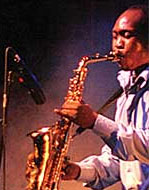About Public Media
Knives sharpened for renewed assault on CPB
Bills to defund public broadcasting, or at least any radio network that fired Juan Williams, are beginning to seem like a real ...Schiller discusses Juan Williams affair in remarks to NPR Board
NPR President Vivian Schiller’s remarks near the end of NPR Board meeting, Nov. 12, 2010. Over the last three weeks, I’ve heard from ...Schiller apologizes to pubradio colleagues for handling of Williams firing
NPR President Vivian Schiller dispatched this apology Sunday evening, Oct. 24 [2010], six days after the network set off a pre-election political ...Stewards for the media future
What public broadcasting can do to plan for its own future and for federal policies that serve the public interest In the ...Adrift, mute and helpless
Why everyone but public broadcasters is making federal policy for public media The FCC’s recent National Broadband Plan and its Future of the ...CPB budget allocation formula, 1981
In 1981, Congress significantly restricted the Corporation for Public Broadcasting’s decision-making on spending, funneling fixed percentages of CPB’s federal appropriation to specific ...Public Radio Program Directors Association Inc., Bylaws, 2008
Revised and adopted Sept. 15, 2008 ARTICLE I. BASIC POLICY It is the basic policy of the corporation to be noncommercial, educational, nonsectarian and ...Ford Foundation spending for educational broadcasting, fiscal years 1951-76
The Ford Foundation was noncommercial television’s first big funder, years before Congress contributed large sums — supporting efforts to acquire reserved channels, ...Public Broadcasting Act of 1967
Public Law 90-129, 90th Congress, November 7, 1967 (as amended to April 26, 1968) This law was enacted less than 10 months after ...Editorializing prohibited in Public Broadcasting Act
The act says: "No noncommercial educational broadcasting station may engage in editorializing or may support or oppose any candidate for political office."CPB/PBS Diversity and Innovation Fund weekly series RFP
Three years after Latino activists bitterly criticized Ken Burns’s The War for omitting interviews with Hispanic soldiers and sailors, CPB and PBS concluded negotiations ...With RFP, PBS pursues ‘Explorer Archetype’ in productions
From PBS’s June 2010 request for primetime series proposals to be funded by the CPB/PBS Diversity and Innovation Fund. See also Current feature ...Public affairs: What the invisible hand of the news market leaves all too invisible
People consuming public affairs coverage because of duty or a fascination with policy create a demand for news with context, ...Fanning on a ‘big bang’ moment for Frontline: bringing online depth to reporting
David Fanning, e.p. of Frontline, discussed the WGBH program’s evolving use of the Web Aug. 23, 2010, in accepting the Goldsmith Career Award ...David Fanning’s Loper Lecture, 2009
David Fanning, the founding executive producer of PBS’s Frontline series, gave this talk in 2009 as the annual James L. Loper Lecture in ...



